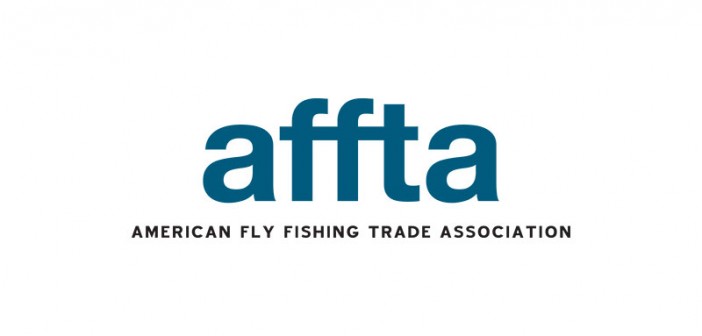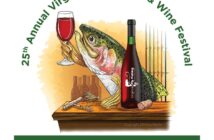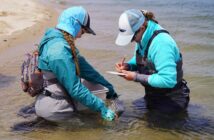
AFFTA’s Communications Director, Jess McGlothlin
AT is pleased to run a monthly column by Jess McGlothlin, the communications director for the American Fly Fishing Trade Association…
By Jess McGlothlin
Over the years, I’ve worked retail in fly shops, outdoor shops, climbing stores, and ski shops. This is a critical time of year for many independent shops out there; today’s retail environment adds extra challenge to an already stressful time of year. Sellers need to sell, and every person who walks in the door needs to leave with something in hand.
Retail in general seems to have a selling skills problem—how many times have you observed glossy-eyed sales clerks who can barely manage to work the register, much less answer any questions? In outdoor retail, this presents a larger problem; we’re often dealing with a clientele with very specific needs. Our customers need to know what fly is working on the local waters, whether to get a medium or heavy tip to match that new Skagit line, and what layering technology is best for winter conditions. By its very nature, we’re in an interactive business.
Whenever I’m training new staff in a retail environment, I always touch on three basic points:
1. Always use open-ended questions.
“Can I help you?” is an automatic fail. It gives the customer an easy out—they answer “yes” or “no” and the conversation is over. Greet a customer with a question that requires interaction. “Where are you heading?” or “What do you look for in ____? (whatever piece of gear they are looking at)” prompt real answers, which then can turn into conversations. And even if the customer walks out the door without buying anything, you can bet they’ll remember that conversation.
2. Fulfill a need.
Building off the above, find a need and fill it. Pretty how to buy xanax simple. Does your customer drop the hint he has a saltwater trip coming up? Make sure he/she knows he/she needs high-SPF, waterproof sunscreen. Did she mention they fly she tired this morning didn’t work? Show her one that will. This is an easy way to build add-ons to a sale, and the last thing we want is a customer leaving with something they’ll never use. Helping solve problems is a way to guarantee you’ll have a return customer.
3. Help the customer interact with the gear.
Rig up a rod and let them cast it. They’re looking at clothes? Get them in the dressing room with that shirt they liked (and a couple others that are similar). Sunglasses on the menu? Get outside with several different frames and lens tints to test in the sunlight. When I worked in a store with climbing gear, we rigged a rope from the ceiling and helped customers test out climbing harnesses in a real “hanging” environment. In response, sales more than doubled. Trying gear increases customer interaction, lowers returns, and makes everything much more fun—for both staff and customers.
Of course, you want to take the time to to train your staff; a customer-service-centric environment breeds success, and you’ll find it’s more enjoyable from both ends of the perspective. Staff members are happier when they’re engaged, and who doesn’t like to see good results in the register at the end of the day? And you’ll find the more you build a relationship with customers, the more you’ll have a following, a “tribe” with customer loyalty.
These tips translate directly for guides, lodges, and anyone who has any interaction with other people (so, all of us.) Start conversations, solve problems, and fulfill needs. Pretty basic stuff.





2 Comments
Very interesting article, but you left me wanting more! Can you go past the basics maybe just sticking to fly fishing/ fly tying for examples. (Climbing is fine, I get your point. But I’m guessing most readers here aren’t trying to sell climbing gear. Casting is a very easy example to relate to.). Other ideas? Thanks, Frank
A few of us sat down to discuss this question last summer, “What qualities does a good fly shop have?” We approached it from a avid fisherman standpoint but acknowledge that in some markets a more broad product range can lead to increased financial success.
Here’s our list:
Associate / owner greets you by name
Within a 30 minute drive to the beach / marina
Blue ribbon river/creek/stream within 30 minutes
Open year round
Events at least once per week
Tying nights
Occasional free beer
Shop hot dog and hamburger days (barbecue!)
Movies
Live music
New gear / season opener events, even better with vendor rep. presence
Meet the artist / author events
Education / how-to, (tying, casting, fishing, entomology, rigging & etc.)
Travel Reports / hosted travel
Annual sale(s) events
TU / FFF discount days
College Fly Fishing Club discount day
Shop can outfit for multiple species
A gravel parking lot
Casting pond or grass casting area
Boats inside or outside the shop, (drift boats, rafts and fishing kayaks all count)
Genuine wood stove with chairs around it, (extra points for spittoon & refrigerator)
Shop dog or cat
Coffee is always on
Ice and coolers for sale
Provides prizes to local TU / FFF chapters
More than one rod / reel / wader brand
Something to interest spouses
Quality guide team, but shop caters to the independent/DIY angler
One genuine shop curmudgeon who has redeeming features
Good gifts, not cheesy stuff
Real local fishing pics and art on the walls
A bazillion flies
Chew tin style fly cups
Licenses available
Can offer discounted lodging / dining at “fine” local establishments
A solid book / magazine assortment
Local maps
A good local hat & shirt selection at believable prices
Free stickers
TU / FFF branded gear
Associates ask open ended questions to engage you / they don’t ask yes-no questions, e.g. Assoc. sees you looking at flies and asks, “What kind of flies are you looking for?” Assoc. sees you looking at waders and asks, “What do you look for in a pair of waders?”
Associates engage you more deeply in the shopping experience, e.g. Assoc. sees you looking at a shirt and helps you try it on to see how it looks, Assoc. sees you looking at a rod and strings it up so you can try it, Assoc. see you looking at sunglasses and helps you to take several lens colors outside to see how the perform in sunlight.
Associate helps the customer to solve problems they might not even know they have, e.g. Customer lets slip that they are going to Alaska and Assoc. helps them select the best insect repellent available.